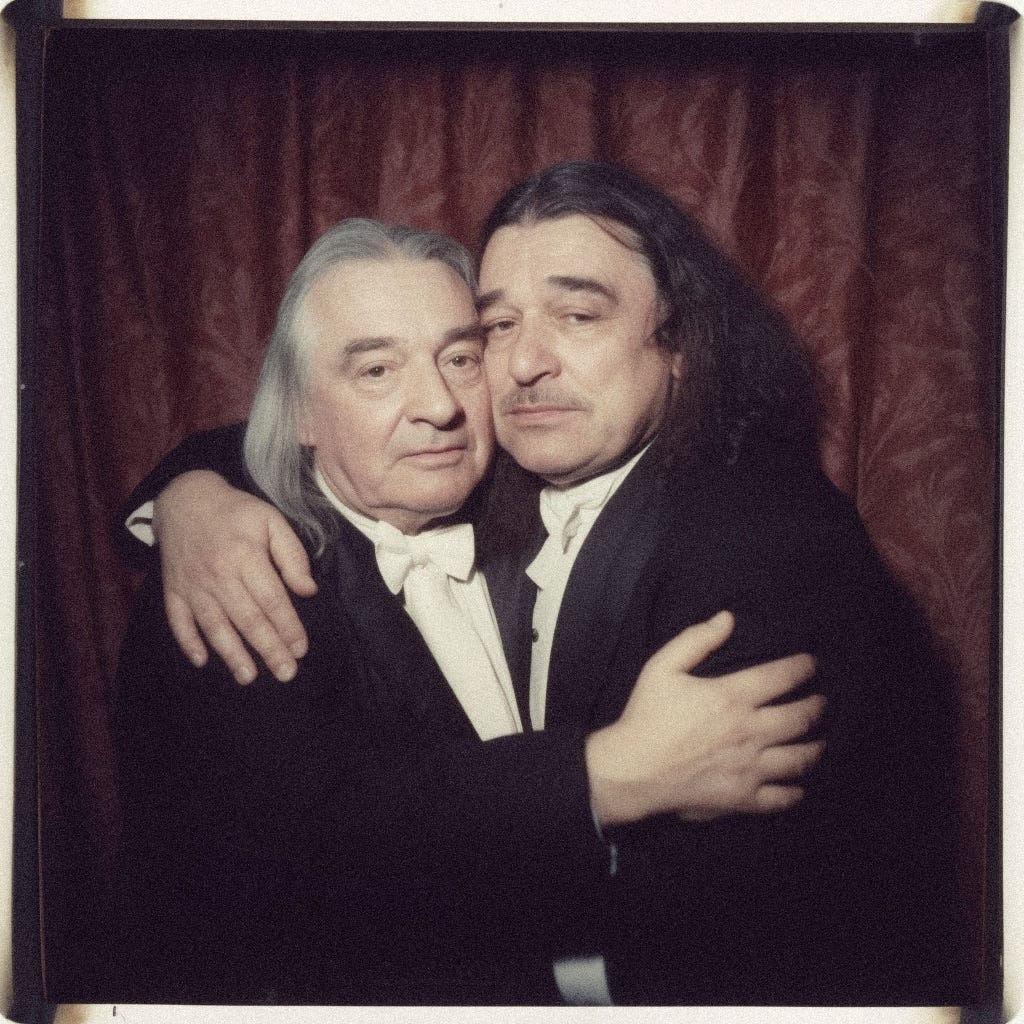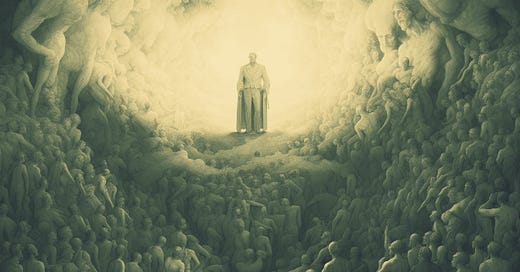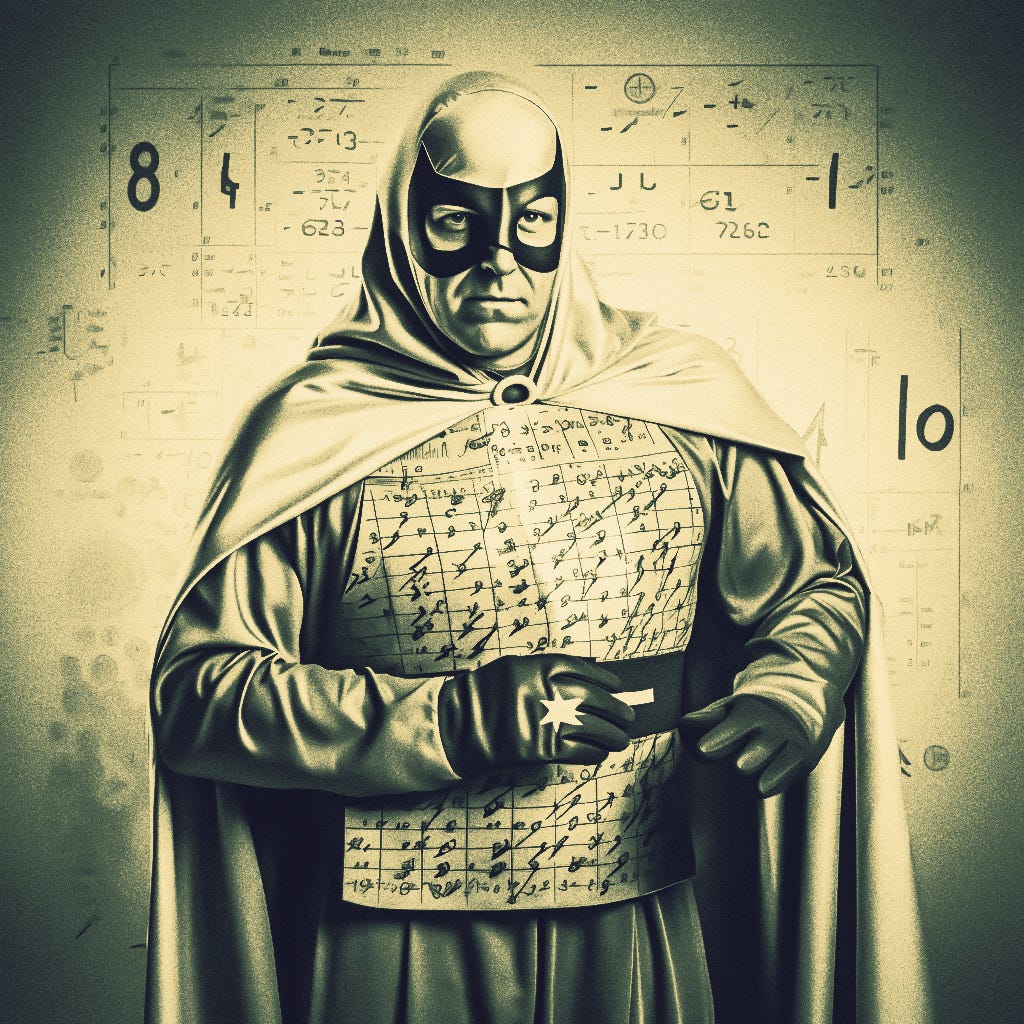I’ve just returned home from a trip to the Georgian Republic. I went there to visit one of our First Things Foundation field workers. His name is Oswald, a great guy. During my trip I was reminded by a Georgian friend that some of the oldest human remains have been found in Georgia. He told me the Caucuses is the original home of humanity. And that made me think about the word Caucasian, and the word race and all of that wondering has led to this month’s article. Let’s talk about race, shall we?
Race, in a scientific sense, does not exist. Human variation cannot be reasonably understood using race as a category. Black genes and white genes are not demonstrably different, and there is no evidence, and there has never been evidence, to support the idea that racial categories correlate to human destiny. In our history as humans, what we moderns know as race has rarely been the dominant category by which to divide human beings. Those distinguishing cultural categories have been the language you speak, the name you carry and the deity you worship. The term religion itself denotes a binding together. The Latin “lig” in the word religion, is the same lig in the word ligament. In fact, pre-Enlightenment people (in this substack we refer to them as Old World) thought of their societies as living bodies knit together by ligaments or commonly held beliefs about The Good. This commonly held understanding is what Old World people called religion. Religion, for most of human history, has meant that which binds society together.
Just think of a major league baseball team. What’s the ligament that binds those 26 people together? Is it love of neighbor? Possible. Is it love of large salaries? Maybe. But surely, a baseball team that flourishes must at least share a love for the game, and everyone on the team must surely look up to those who “do baseball well”. Without a common reverence for the game the team will surely fall apart. In the same way, every culture, every cult, has for itself a common good. In this way, all humans practice religion. All humans, at all times and wherever they are found, congregate around a perceived good. It’s what culture is. Without the binding ligament there can be no culture. Without something to look up to and be bound together by, a culture must splinter and undergo steady dissolution and debilitating loneliness. If a culture does not practice religion, it will ultimately succumb to nihilism. It will die.
In the Old World there were basically three ways to know the good, three ways to bind: Language, lineage, and deity. These were binding agents that let people know who they were, and who they were not.
But these binding agents have been dissolved. This New World of ours is very different from the Old. This world is dominated by a different cult, the cult of Cartesian individualism. If you think, you are. That’s René Descartes, the French philosopher who died about 300 years ago. You know about him because you are him. If you grew up in the western world in the last 250 years, you have imbibed thinking as being. Descartes’ work, disseminated as the default truth in all manner of European experiments (like public schools and democratic government) dominates how we Westerners think about ourselves. To think is good. To think well is The Good.
The materialist and rationalist philosophers worked hard to move the location of heaven from heart to head. Rationalism became a mindset, and I like that word, mindset. It speaks to the epistemological truth about western life: Our mind is set high as the key operating tool for a rewarding life. Use your mind and reward your body is how it goes in the New World.
But when it comes to race, this scientific approach to human categorization has proven brutally destructive for humans of all “races”. It is evident to us now that racial categories invented by New World race rationalists are simply false categories, set apart from human reality.
And there’s one more thing, a very tricky thing, that needs to be pointed out regarding race. Light-skinned people pushed this new type of racial knowing. Light People created white people as a relevant racial category. White-skinned scientists allowed race to become a stand-in for the binding elements of the Old World.
Race became a new way to religion.
But as new racial categories were being born during the Enlightenment, most white people did not think of themselves as white. They described themselves just as all Old World people did (and do). They found their meaning in family name and language groups and in their gods. They were light-skinned but knew themselves as barrel makers (Cooper) or iron peddlers (Smith) or as followers of Luther, or of the Pope. White people cults in old Europe looked a helluva lot like the cult of modern day Malians, or Mayans or Bedouins. Pre-Enlightenment white people lived and worked and thought a lot like pre-Enlightenment everyone. In that world, skin color and so-called race just didn’t matter as much. They weren’t binding ligaments.
So how did this change happen? Who were these folks moving the cultural goal posts and calling themselves “enlighteners” as they went?

Well, first of all, the enlighteners loved math. Look at what some of the most influential thinkers of the Enlightenment say about God and math. Descartes says that, “Mathematics is a more powerful instrument of knowledge than any other that has been bequeathed to us by human agency.” David Hume, an empiricist, argued against ideas residing in the heart. He rejected the notion of things innate. He believed that all human knowledge derived solely from experience. His ideas are the basis for modern scientific thought; if you can smell it, touch it, taste it, hear it, or see it, you can measure it. If you can measure it, it is something real. It is relevant. Science. These new philosophies got people of the 17th and 18th centuries a bit discombobulated. John Donne, the renowned poet, and one of the first to notice the power of New World thinking, wrote in his famous poem The Anatomy of the World (1611):
The new philosophy puts all in doubt, The element of fire is quite put out,
The sun is lost, and the earth, and no man’s wit
Can well direct him where to look for it.
The rationalists and materialists would create a mechanistic modus for all things that exist. The new cult and its leaders were set on driving heaven north, to the brain, the place they called rational.
Thus, goal posts defining the new way and the New World were put in place. One post was rationalism, the other empiricism. These posts helped the Light People manifest essential cult dogmas supported by emerging institutions and highly efficient free markets. Among the most important of all these neat new things was trans-oceanic travel. The 16th, 17th and 18th centuries are all about Light People in boats. Using reason and empirical data to make their boats go further and faster, the new cult landed on distant shores ready to assess, and quantify, and calculate and theorize. Light People landed ready to offer dollars and sense to all people, everywhere; north, south, east and west.
And so begins the story of the New World’s project to transform the Old. White Old World Orthodox Russians subjected to white New World French philosophes. Brown Old World Aztecs subjected to white New World conquistadors. Yellow Old World Daoists subjected to white New World Anglo-Saxons. Red New World Taínos subjected to… You get the point. Western rationalists came calling with their new epistemology, and one very essential aspect of this materialist epistemology was race science. And because race was being made real among leading scientists, what hadn’t mattered so much before became a hiccup of massive historical proportions. After all, the men claiming that race science was real were also self-identifying as white. Language science (linguistics) and God science (theology) had always existed, but they now gave way to a new science called race.
At this point an attentive reader of history might object: “But dude, it’s not like people before hadn’t noticed the rainbow of humanity, the many hues of mankind. It’s not like race was something brand new.” This is true. Old World people knew all about black and white people, but they just didn’t organize humanity that way. Skin color and facial features were not prioritized as deeply held human categories. That is not to say that humans of old weren’t awful to one another. They were. Look at the Romans. They enslaved people left and right, by some counts slaves made up nearly 40% of Italy’s population at the time of Christ. That’s more than three million slaves. The entire empire at the time was said to have more than 5 million slaves. And who were they? Whites from Gaul, pale hombres from Hispania, black people from North Africa, brown people from Syria, ruddy Germanic folks, red and pasty Brits and olive-skinned Greeks; all enslaved, and few of them liking it. Romans were slave lovers, but they were race deniers.
New world rationalists, however, were race builders. They needed to categorize people in a new tangible, material way, a way that Descartes and Hume would be proud of. The mysteries of the world, Old and New, would now become subject to a whole new paradigm.
The race studies began, and oh boy were they moronic. Emmanuel Kant, the blacksmith of modernity, got sucked in, writing the following around the time of the American revolution:
Humanity exists in its greatest perfection in the white race. The yellow Indians have a smaller amount of talent. The negroes are lower and the lowest are a part of the American peoples.
Presumably Kant reached these conclusions based on tests designed for pre-enlightenment brown people by, um, Light People.
In 1795, Johann Friedrich Blumenbach came up with a new classification scheme. In his very scientific book, On the Natural Variety of Mankind, he divided humanity into five varieties. Like Carl Linnaeus (a man knighted for his science) before him, Blumenbach associated each newfound “race” with a particular geographic area—Negro (African), Mongolian (Asian), Malay (Southeast Asia), American Indian (American), and Caucasian (European). These classifications, most of them built on dubious studies of skulls and skeletons, were picked up by American scientists and by 1920 had entered popular American culture in a book called The Rising Tide of Color Against White World-Supremacy. In that book, the author Lothrop Stoddard proudly declared the world to be made up of five races: White, Black, Yellow, Brown and Amerindian. Ahem… red. Oh, and as you might guess, Stoddard (a world-renowned historian) argued that Nordic and Alpine whites were elite in their “intellectual acumen”. Stoddard by the way, like many academics and scientists of his time, was also an avowed eugenicist.
In many ways, the world was now dominated by the head, by reason and ego. Math now superseded linguistics. Science had overcome theology. Seen-stuff became more important than unseen-stuff. The march toward modernity was a march away from the nous, and this march was being led by Light People. As history would have it, the Light People were white people. The people making race real also happened to be the decision makers of the New World, and that has proven to be a really sticky problem. Race, a thing once irrelevant, was used by the elite to usher in a new rationalist reality. White things became good things, and brown things became black things, and all things became subject to scientific papers. Our conversations about identity took a decidedly scientific turn. Language, lineage and deity were now secondary to genetics and race. We became trapped in our minds, dominated by data, facts and materiality.
Phillip Sherrard, an Englishman dipped in the old ways of Orthodox Christianity, wrote a book that goes a long way in explaining the terrible dilemmas we moderns have created for ourselves and the world writ large. His book, Rape of Man and Nature, demonstrates how modernity has created an anthropology that manages to snatch divinity from humanity. We’ve defined ourselves out of existence. He writes how we’ve degraded ourselves into believing we are “uniquely smart, and completely soulless mammals.” He argues that we New World types have created a cult, a culture, void of art and the beauty of paradox. This adoption of nihil, of nothingness, started when New World man threw out the greatest of all paradoxes, and the first principle of Truth: God became man so that man could become like God. Christ, he argues, is God and Man (a pure paradox), and we, in turn, are Man becoming like God.
The race scientists and materialist philosophers reject Sherrard of course. For them, all of this paradox stuff is simply nonsense. God as man is foolishness. Race is real because genes are everything. They have to be everything, how else can we know who we are?
Race science has attempted to insert itself as the answer to this very important question for many years now. But it is a terribly flawed concept. Race as we understand it today destroys identity claims, and muddles up the mission to know thyself. It is simply too shallow and too inaccurate to be of any use. It is also an answer forged by an historically tiny elite in order to further a worldview that makes mankind into monkeys and creation into profit margins. We should stop using race as a way to define anthros. We should pick up again the difficult and deep questions that Christian Theanthropology presents to us. We should attempt, yet again, to imagine the paradox as reality, to imagine God as with us, and in us, and of us. Emmanuel indeed!







I don't think this is what God taught Israel about race when they were coming out of Egypt. If you read the entire Old Testament it appeared He really believed what He taught them about race from the beginning. There is nothing wrong with putting your family first and protecting them.
Instead of blowing up all the churches in the 1930s maybe they should have blown up the universities. Just saying...😉